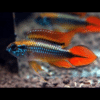To provide the best experiences, we use technologies like cookies to store and/or access device information. Consenting to these technologies will allow us to process data such as browsing behaviour or unique IDs on this site. Not consenting or withdrawing consent, may adversely affect certain features and functions.
The technical storage or access is strictly necessary for the legitimate purpose of enabling the use of a specific service explicitly requested by the subscriber or user, or for the sole purpose of carrying out the transmission of a communication over an electronic communications network.
The technical storage or access is necessary for the legitimate purpose of storing preferences that are not requested by the subscriber or user.
The technical storage or access that is used exclusively for statistical purposes.
The technical storage or access that is used exclusively for anonymous statistical purposes. Without a subpoena, voluntary compliance on the part of your Internet Service Provider, or additional records from a third party, information stored or retrieved for this purpose alone cannot usually be used to identify you.
The technical storage or access is required to create user profiles to send advertising, or to track the user on a website or across several websites for similar marketing purposes.



 Madagascar Cichlid Paratilapia polleni Starry Night - 2 Fish Male + Female, Easy Care Cichlid Fish for Beginners, Perfect Addition for Vibrant and Colorful Aquariums
1 × £30.00
Madagascar Cichlid Paratilapia polleni Starry Night - 2 Fish Male + Female, Easy Care Cichlid Fish for Beginners, Perfect Addition for Vibrant and Colorful Aquariums
1 × £30.00 
















Emily Johnson (verified owner) –
I’ve been an aquarium enthusiast for over five years, and I recently added a pair of Andinoacara Pulcher ‘Neon Blue’ to my 55-gallon tank. Let me tell you, they are a stunning addition! Their vibrant colors are mesmerizing, especially the iridescent blue that stands out against the substrate. I purchased them about two months ago, and they’ve settled in beautifully. Watching the male and female interact during feeding time is delightful; they exhibit such unique behaviors!
Compared to other dwarf cichlids I’ve kept, these guys are more social and less territorial, which makes them a perfect choice for my community tank. I initially had concerns about their compatibility with my other fish, but they’ve been nothing short of friendly. Just a tip: ensure they have plenty of hiding spots, as they appreciate a bit of privacy.
Overall, I highly recommend this pair to anyone looking to enhance their aquarium with captivating personalities and vibrant colors. They are fantastic for both novice and experienced hobbyists alike. I would definitely buy from here again!